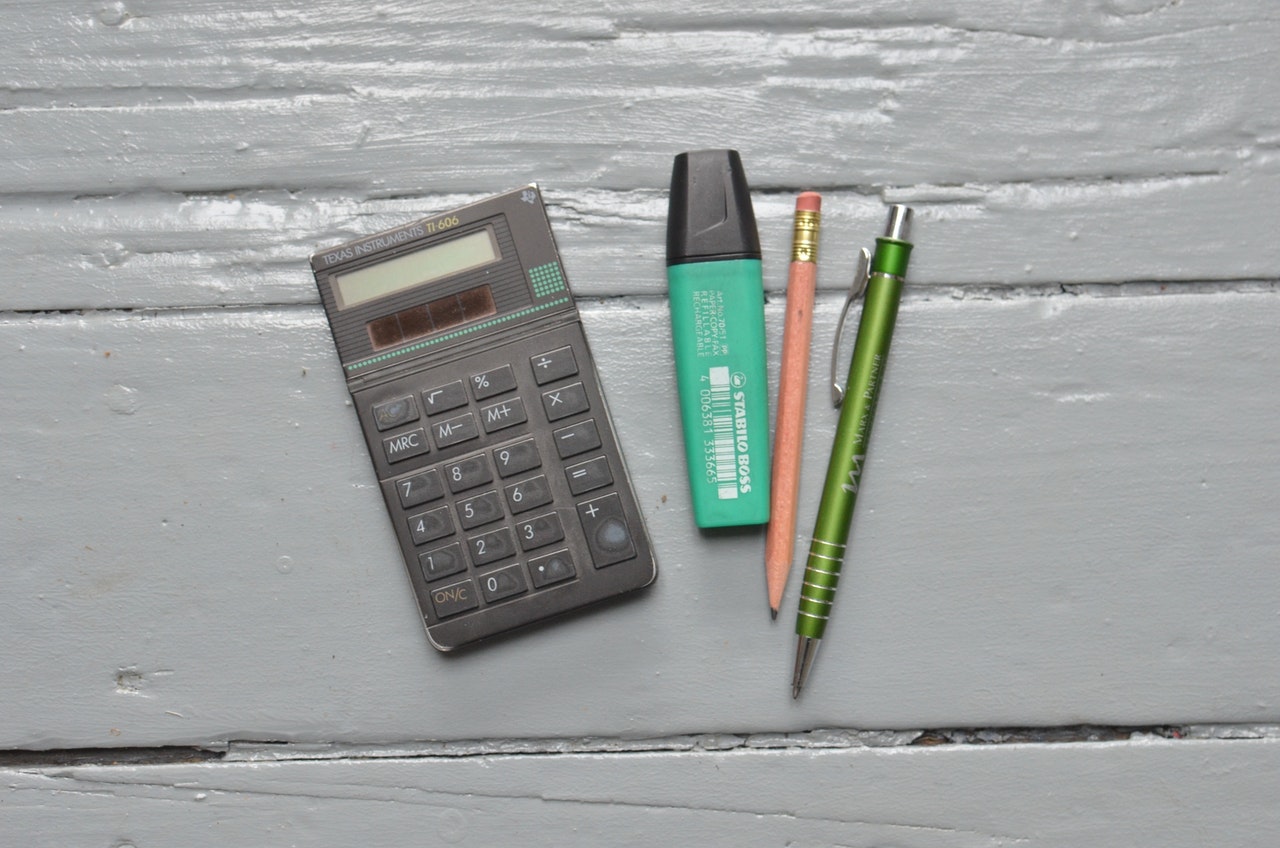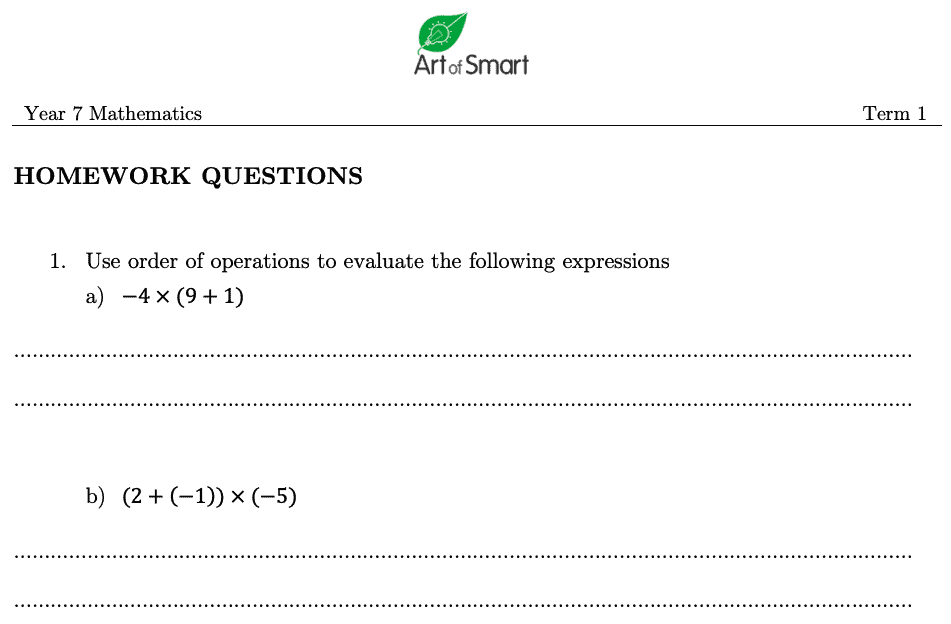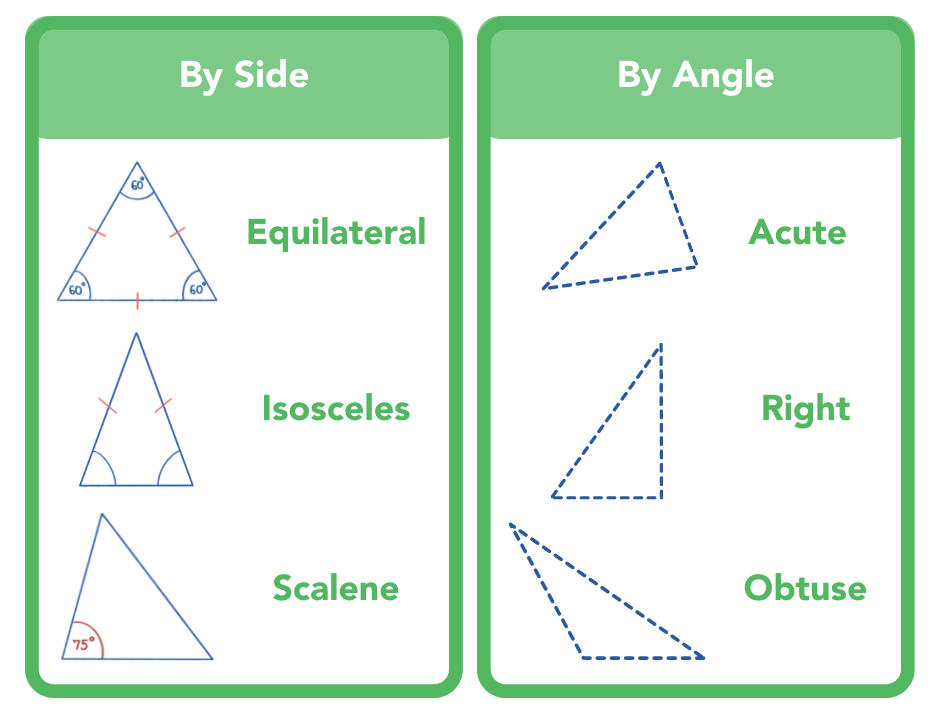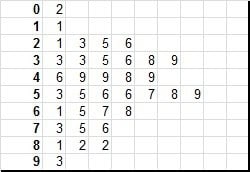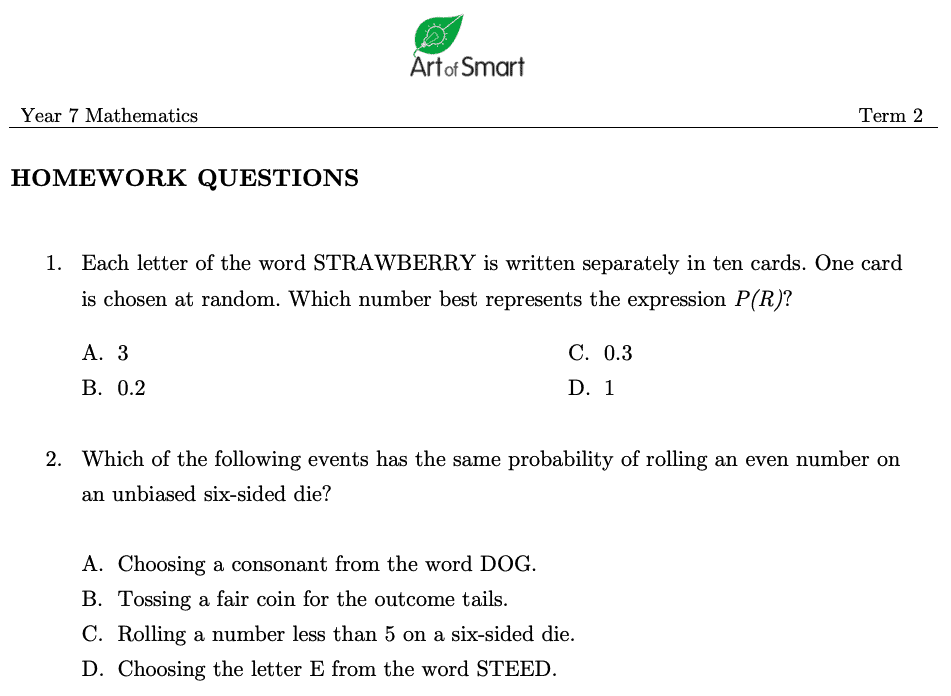Wondering what your child will learn in Year 7 Maths?
We’ve got your back! We’ll be guiding you through Australia’s Year 7 Maths Syllabus and its main content, key skills and achievement standards.
And if you’re wondering how well your child should be performing, we even provided links to free work samples below, at and above satisfactory level.
What are you waiting for? Let’s get right into it!
The Year 7 Maths Curriculum
#1: Number and Algebra
#2: Measurement and Geometry
#3: Statistics and Probability
Key Skills Developed in Year 7 Maths
Achievement Standards in Year 7
Looking for Maths guides for other year groups?
If you have a child in a different year group to Year 7, we’ve also got guides for them! Have a look at our guides for the various year groups:
Year 8 | Year 9 | Year 10
What does your child learn and what topics are covered in Year 7 Maths?
There are three content strands in the Year 7 Mathematics Curriculum, and they are:
- Number and algebra
- Measurement and geometry
- Statistics and probability
You’re probably wondering, “What topics do these strands involve?” So, let’s dive deeper into the details of each of the three content strands.
Remember: Year 7 students will sit through NAPLAN and will be tested on their Maths skills. Year 7 NAPLAN tutoring can ensure students are prepared!
Important changes are coming to Years 7-10 Maths Curriculums in 2024! Make sure you’re ahead of them.
#1: Number and Algebra
In number and algebra, there are five main topics that your child will learn about. These are:
- Number and place value
- Real numbers
- Money and financial mathematics
- Patterns and algebra
- Linear and non-linear relationships
Number and place value
For number and place value, your child will learn about what index notation is. Additionally, they will also be able to identify and compare between prime factors and composite numbers.
Prime factors are positive integers that can be divided by 1 and itself while composite numbers are positive integers that can be divided into two smaller positive numbers. To present whole numbers as products of powers of prime factors, your child should also be able to use strategies such as repetitive division or a factor tree.
They will also learn how to solve problems involving lowest common multiples and highest common factors by analysing the factors of whole numbers.
Image sourced from Medium
Another skill your child will learn from this topic is how to analyse and use square roots of perfect square numbers such as 25 or 36. From this, they will start using the “tick” symbol, otherwise known as the square root’s radical symbol that looks like √ to represent square root notation.
Additionally, they will apply mathematical laws to support their mental and written calculations. These laws include the associative, commutative and distributive laws of mathematics.
They will also use these laws to help them describe and simplify calculations in comparing, ordering, adding or subtracting integers.
Real numbers
There’s a real set of skills to be learnt in real numbers, and one of them is using fractions. Your child will use number lines to compare the order or mixed numbers, positive and negative fractions.
They will also use a wide array of strategies to solve problems involving the addition, subtraction, multiplication, division and expression of fractions. Some of these strategies also involve both concrete materials and digital technologies, so how cool is that?
Besides fractions, your child will also learn about other proportional mathematics such as decimals, percentages and ratios. They will learn how to round off decimals and convert them into fractions and percentages and vice versa. They will also represent quantities in percentages with and without a calculator.
Rate and ratio problems will also be introduced, where your child will need to use fractions or percentages to solve them.
Money and financial mathematics
So, what’s the best deal? In money and financial mathematics, your child will learn how to investigate and determine “best buys” through using the unitary method, such as comparing the cost of items per 100g.
Patterns and algebra
Here’s where numbers turn into letters! Your child will be introduced to the concept of variables, where numbers are represented as letters.
They will develop algebraic terms and expressions, and substitute variables to solve problems.
The order of operations will come in handy here, as your child will be given real life problems whereby the use of brackets as opposed to conventional order may be useful in preserving the logical flow of calculations.
Linear and non-linear relationships
If your child is ever fascinated by airplanes, here’s a good one for them. In linear and non-linear relationships, your child will be given coordinates to plot points on the Cartesian plate or they will need to find coordinates for a specific point. From here, they will learn to recognise simple patterns such as straight lines.
From here, they will be given simple linear equations to solve using a range of learning tools such as the balance model or the substitution method. They’ll also get a chance to analyse and interpret graphs from real-life scenarios such as travel graphs, evaporation rates and more to make sense of trends in the slope of lines.
Image sourced from Wikimedia Commons
Looking for Year 7 Maths worksheets? Check out our sample worksheets on Operations with Integers below!
#2: Measurement and Geometry
Enough about numbers, what about shape and sizes? Well, in measurement and geometry, your child will be jumping into mathematics involving shapes, including:
- Using units of measurement
- Shape
- Location and transformation
- Geometric and reasoning
Using units of measurement
In this topic, your child will be filled with formulas on how to calculate the areas of different shapes such as rectangles, triangles, parallelograms.
From here, they will be able to calculate the surface areas of 3 dimensional shapes. They will also learn about formulas to calculate volumes of cubes and rectangular prisms using cubic units.
Shape
If your child’s a creative one, they’ll probably have fun with this topic. To visualise 3 dimensional shapes, they will need to draw different views of prisms and solids. For example, they may need to draw aerial views of buildings to picture how the building is structured.
Location and transformation
This topic is sure to test your imagination! For this, you’ll need to use coordinates to describe translations, reflections and rotations on the Cartesian plane.
What this means is that an image of a shape will be provided, and your child will need to investigate different ways to achieve that image by either reflecting or rotating their own shape. From this, it’ll help them build their identification of line and rotational symmetries.
Geometric reasoning
Playing around with shapes is not enough- your child will also learn how to identify and justify it! They will learn how to categorise and describe triangles and quadrilaterals based on their side and angles.
Moreover, this topic will build their understanding of how the features of shapes provide information useful to problem solving. They will use concrete materials and technologies to analyse the angle sum of triangles and quadrilaterals.
They will also be introduced to corresponding, alternate and co-interior angles when two straight lines are intersected by a transversal line, to investigate the relationships between these angles. Along this, they will also be introduced to the criteria for two lines to be parallel or perpendicular to solve problems.
Looking for Year 7 Maths worksheets? Check out our sample worksheets on Measurement and Area below!
#3: Statistics and Probability
What are the chances that statistics and probability will be in your child’s math lessons? It’s 100%. The Statistics and Probability stream covers two topics, which are:
- Chance
- Data representation and interpretation
Chance
If your child isn’t really interested in the nitty gritty of mathematics, perhaps they will take a chance with probability as it often translates to real life scenarios (especially if they want to figure out how close they are to winning a game).
In this topic, they will learn what probability is, and how to develop sample spaces to investigate events with equal likelihood of success. They will also learn how to differentiate between outcomes that are equally or not equally likely to occur.
Ultimately, they will be able to allocate probability to event outcome and determine how possible this may occur.
Did you know our Hills District expert tutoring team provide both small group and 1-1 tutoring support in Maths? Reach out today to get the support you need at our Campus, in your own home or online.
Data representation and interpretation
There’s so much information out there, but what can your child do about it? In this topic, your child will be identifying and analysing limitations around the collection of data from primary and secondary sources.
Furthermore, data investigation is a huge part of this topic, as your child will be calculating mean, mode and ranges and use data displays such as stem-and-leaf plots and dot plots to interpret or find trends in data.
Some of these datasets may reflect real life scenarios, so your child will learn how to translate their findings into real world situations.
Image sourced from Wikimedia Commons
Looking for Year 7 Maths worksheets? Check out our sample worksheets on Probability below!
Key Skills Developed in Year 7 Maths
The three content strands of the Year 7 Maths Syllabus aim to provide 4 key skills in mathematics, which consists of:
- Understanding
- Fluency
- Problem-solving
- Justifying
Understanding
In year 7, your child is expected to understand concepts in mathematics. For the numbers and algebra stream, this includes being able to explain patterns in indices, applying mathematical laws to solve algebraic expressions and understanding similarities between fractions, decimals, percentages and ratios.
In measurement and geometry, your child should be able to plot points on Cartesian planes and recognise the type of angles formed by transversals on parallel lines.
Fluency
In terms of fluency, your child should be able to calculate integers accurately and convert between fractions, decimals, percentages and ratios seamlessly in the numbers and algebra stream.
They may also learn when to use mean, mode and median to investigate data or which formulas to use to calculate areas of shapes and volumes of prisms.
Problem-solving
It’s not mathematics without problem-solving, so your child should be well adept in using mathematical tools to find solutions to problems by the end of this curriculum. This may involve using numbers, measurements, transformations, angles or chance experiments to answer questions.
Justifying
Finally, your child should be able to justify their methods of calculation. Reasoning consists of applying mathematical laws to calculations, using geometric concepts to interpret shapes or applying an understanding of ratios to draw conclusions about different data displays.
Achievement Standards in Year 7 Maths
There’s a lot of knowledge and skills to learn in the Year 7 Maths Syllabus, so how can we be sure that your kid is on the right track?
The good news is, half of the content in the Year 7 Mathematics is at an introductory level, so it’s not like the curriculum is throwing your kid into the deep end. And even if it’s content that’s been learnt in the past, the curriculum is geared towards building on top of your child’s knowledge from previous lessons.
If you’d like more detail about where your kid should be by the end of year 7 for each of the three streams, here is a general outline:
Numbers and Algebra
- Solve problems on comparing, adding and subtracting integers
- Understand the relationship between whole numbers and index notation
- Understand the connection between perfect squares and square roots
- Perform conversions between fractions, decimals and percentages
- Differentiate the cost of products to inform financial choices
- Understand how to use variables to represent numbers
- Apply number laws and properties to algebra
- Apply substitution to solve algebraic expressions
- Interpret basic linear equations
- Solve simple linear equations
Measurement and Geometry
- Identify similarities and differences between triangles and quadrilaterals
- Describe three dimensional shapes from different point of views
- Draw transformations on Cartesian plane
- Developed ordered pairs to points on Cartesian plane
- Apply formulas for perimeters, areas and volumes of prisms
- Identify the different types of angles formed by a transversal line crossing two lines
- Apply their understanding of angles formed by transversal crossing two lines to solve problems
Statistics and Probability
- Understand barriers with collecting continuous data
- Develop a sample space to test equally likely outcomes in simple experiments
- Allocate probabilities for outcomes
- Calculate data mean, mode, median and range
- Describe relationships between median and mean from data representations
- Draw steam-and-leaf plots
Sample Work
So, what counts as work that’s at a satisfactory level in Maths for a Year 7 student?
Here are some links to free samples of work that’s above, below and at a satisfactory level.
Looking for some extra help with Year 7 Maths?
We pride ourselves on our inspirational Mathematics coaches and mentors!
We offer tutoring and mentoring for Years K-12 in a variety of subjects, with personalised lessons conducted one-on-one in your home or at one of our state of the art campuses in Hornsby or the Hills!
Personalised Maths tutoring in Castle Hill, Kellyville, or Penrith, and Hurstville is here to support you! We also have expert HSC math tutors in Blacktown!
To find out more and get started with an inspirational tutor and mentor get in touch today!
Give us a ring on 1300 267 888, email us at [email protected] or check us out on TikTok!
Kate Lynn Law graduated in 2017 with an all rounders HSC award and an ATAR of 97.65. Passionate about mentoring, she enjoys working with high school students to improve their academic, work and life skills in preparation for the HSC and what comes next. An avid blogger, Kate had administered a creative writing page for over 2000 people since 2013, writing to an international audience since her early teenage years.

